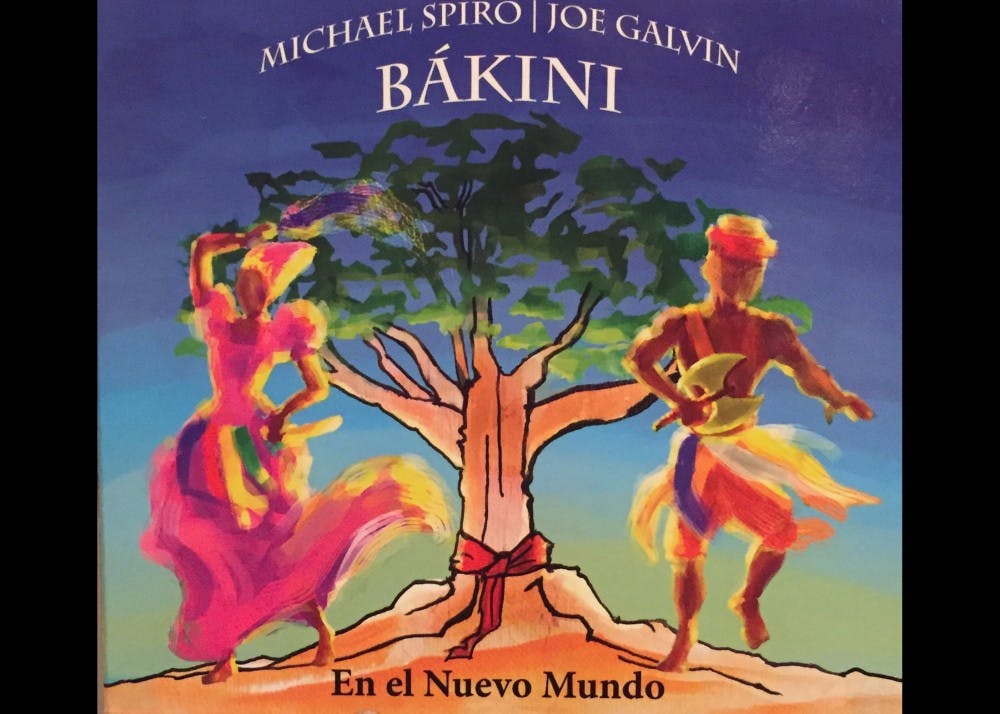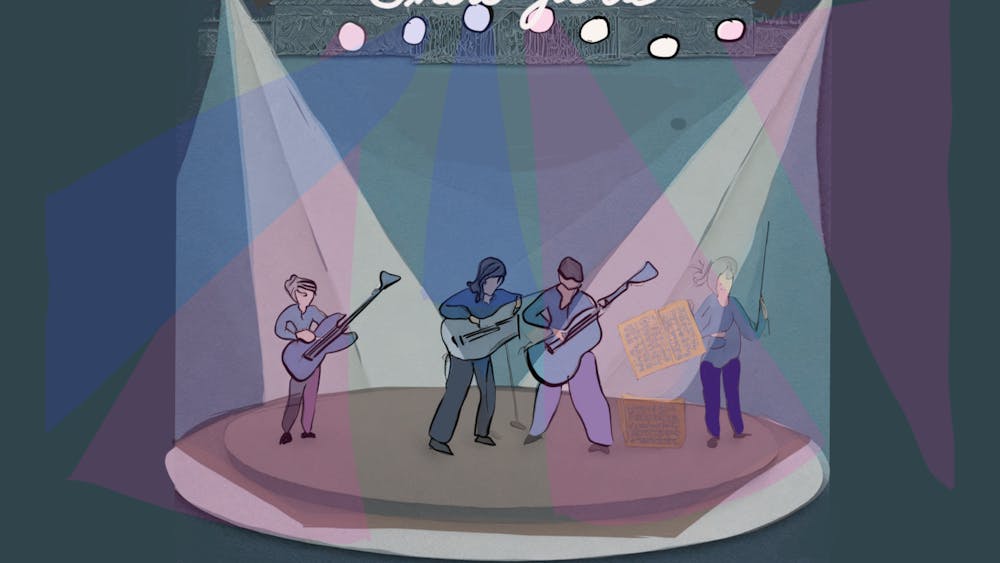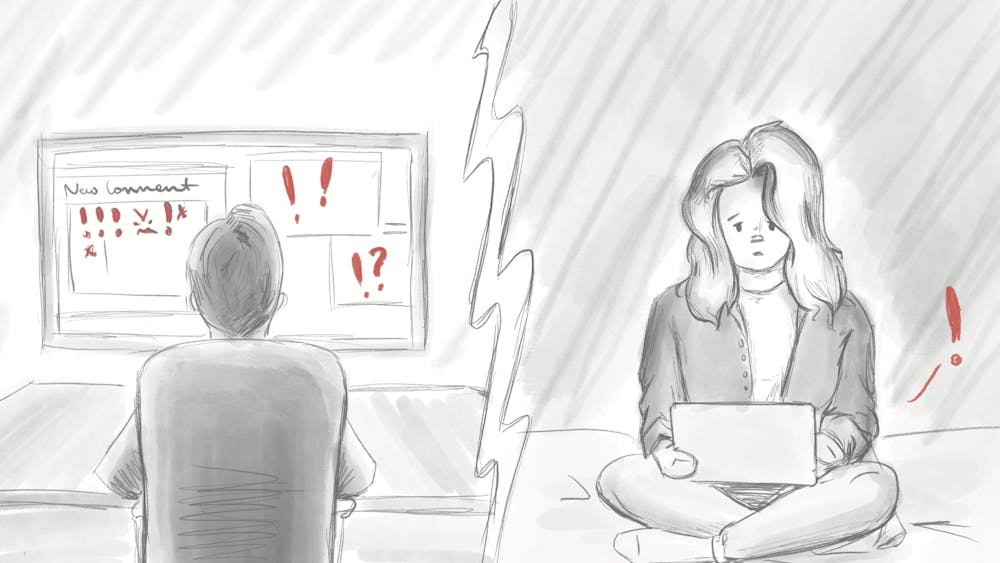Over a year and a half in the making, Afro-Cuban percussionist and IU Jacobs School of Music faculty Joe Galvin and Michael Spiro get ready to release their CD, "Bákini- En el Nuevo Mundo" on Sept. 22. Galvin spoke with the Indiana Daily Student about the details of the new album.
Indiana Daily Student: Can you explain how the idea for the album was created?
Galvin: Michael Spiro’s claim to fame, if you will, is that he recombines styles in a way that takes longer works and shows the similarities between them, particularly between Afro-Cuban music and Afro-Brazilian music because they stem from the same base culture in Africa. When they were brought to the new world during the slave trade, they grew apart, but a lot of the songs share very close similarities in rhythms. So, this CD is an extension of that based on the work we got to do in the Afro-Cuban ensemble of putting together these longer suites and mixing different styles of folkloric music.
Instead of letting those pieces get performed once at the end of the semester by the student group and then disappearing into the ether, we wanted to document them in some way. We were able to create a professional recording of those arrangements we’ve made over the last 10 years in the Afro-Cuban ensemble and turn it into a commercial CD.
IDS: So these songs are reworked traditional songs for a broader range of instruments?
Galvin: We still present it in its folkloric sense. We want to honor the music and our elders who taught them to us, so we don’t change the fundamental aspects of the music. We just recombine them in new ways, so changing the instrumentation or putting songs or rhythms together that wouldn’t normally go together. Maybe putting the same folkloric music on marimbas and vibraphones or orchestral percussion at the end of Oyá but still maintaining at its heart its folkloric roots.
IDS: Can you explain the three sections of the album, the Aganyú Suite, Maracambique and the Oyá Suite?
Galvin: I’m going to do this slightly out of order, Aganyú and Oyá. Those are both deities in the Afro-Cuban religion Lucumí. Each deity in the lineage of Lucumí has their own specific songs and rhythms that are played to them, to honor them, so these suites are demonstrating all the different ways of playing music to the god Aganyú or the goddess Oyá and recombining them in ways that haven’t been heard before. You might hear the original folkloric sound up front and it changes throughout.
The middle piece Maracambique is secular. It’s combining carnival music, which is celebrated throughout Latin American and even the United States as Mardi Gras. Each tradition has its own way of celebrating carnival. Cuban, Brazilian being the largest, and Trinidadian in its own way with steel pan. This is our way of combining these carnival styles of music, which is just straight up party music. It’s not sacred at all.
IDS: What do the deities in the Aganyú and Oyá Suites represent?
Galvin: Aganyú is the deity of the volcano, he’s a giant. He’s big and powerful. Oyá is the female warrior, so she is also very powerful and her rhythms demonstrate that as well. She owns the tornadoes and hurricanes. We picked these two partially because these were some of the first epic suites we put together for the ensemble, the Oyá one in particular won some awards through the student ensemble in 2011.
IDS: How long did the process to make the CD take form and who performs on it?
Galvin: This is a combination of Spiro and myself and a few of our colleagues here at IU as well as a collaboration with some of our close friends around the country. Although this is a large ensemble sound we recorded it three or four parts at a time, so it was a lot of overdubbing and layering which took an enormous amount of planning. The CD itself, the process, started at the beginning of the summer of 2016 where we started mapping everything out.
IDS: Why did you name the album "Bákini: En el Nuevo Mundo"'?
Galvin: Bákini is a Lucumí word that basically translates to the art of drum and dance. That’s the word that Lucumí practitioners use when they are dancing in front of sacred drums. The reason we chose Bákini obviously is much of this music is originally used in that sense, and "En el Nuevo Mundo," the subtitle, is “In the New World." So we’re not showcasing one particular culture, we are showcasing how these musics have adapted across all of the Americas.
IDS: Do you have a favorite song on the album?
Galvin: I’m really proud of the entire album. It’s been kind of our blood, sweat and tears for two years now and longer if you consider the original renditions of them in the ensemble. So it’s hard to single out any particular thing because I have so much of myself, same with Spiro, invested in this project. But I’m particularly proud and just aesthetically I really enjoy this piece within the Oyá suite “Batá-briyumbero." That’s where we are playing the batá drums which are the sacred drums to Lucumí.
IDS: What kind of audience are you trying to reach with this album?
Galvin: It’s a commercial release CD, so we’re hoping it goes far and wide. It’s going out on all of the standard platforms on Amazon and iTunes and Apple Music and so we’re hoping it reaches a large audience that’s interested in world folkloric musics and Latin musics, specifically Afro-Cuban, Afro-Brazilian and Trinidad. We are also hoping to reach an academic audience of other institutions that share similar programs and similar schools that might have a Latin American Music Center or a Latin American Caribbean studies program.
IDS: Can people get physical copies of the CD on campus?
Galvin: You can purchase them through the university, through the Latin American Music Center or the Jacobs School of Music merchandise area, which I believe is in the the practice building. So there are available physical copies here, the school’s got a couple hundred of them now. The CD itself will be released Sept. 22.






